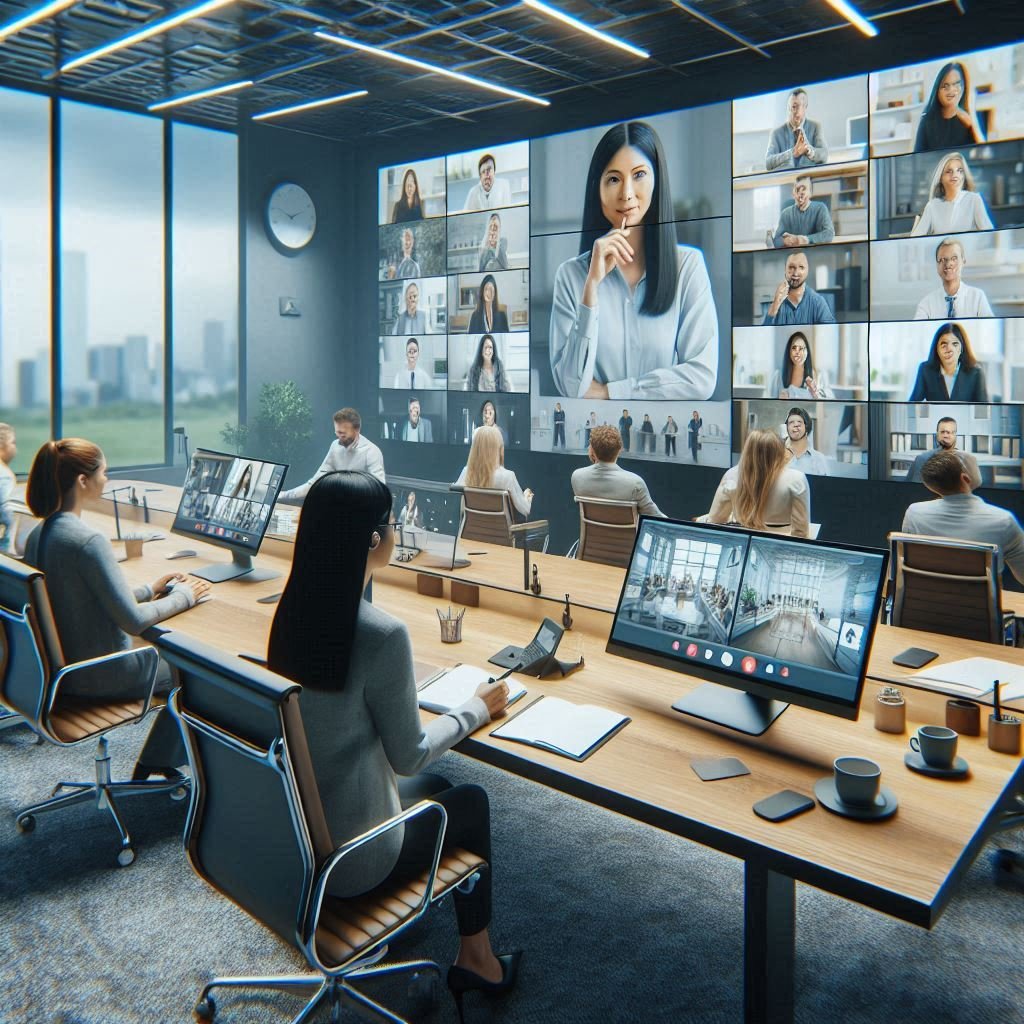Introduction
As remote work grows, video conferencing has become a crucial business tool. But poor video quality—such as pixelated screens, lagging sound, or dropped connections—can harm productivity, cause misunderstandings, and affect your company’s image.
High-quality video conferencing helps teams stay connected, engaged, and focused. 80% of workers rely on video conferencing platforms for one-to-one meetings (Notta, 2024). Here’s a look at why businesses need reliable video conferencing tools and how they enhance every video call, whether it’s with clients, remote employees, or partners.
Impact on Professionalism and Brand Image
When your video calls run smoothly, it shows clients and partners that you are professional and prepared. However, poor video quality can make a business look unorganised or even untrustworthy. This can leave clients feeling uncertain about the company’s attention to detail and reliability.
High-quality video, on the other hand, helps leave a strong impression. Reliable video conferencing software creates clear, face-to-face meetings in real time. With quality cameras and smooth frame rates, your business shows that it values professionalism and efficiency. Advanced features like background noise reduction and screen sharing also create a polished experience that helps clients feel comfortable working with you.
Read more: Using Video Conferencing for Remote Onboarding and Training
Lost Productivity and Miscommunication
Poor video quality doesn’t just affect appearances; it directly impacts productivity. When video lags, audio drops or screens freeze, the natural flow of conversation is broken. People spend time repeating themselves, which can make meetings longer and less effective. In conference rooms or during team meetings, poor-quality video makes it hard for everyone to focus and stay engaged.
Miscommunication can also occur when nonverbal cues, such as facial expressions and gestures, are unclear due to poor video quality. This can cause misunderstandings and slow down decision-making. In virtual meetings, seeing each other clearly helps remote employees understand tone and intent, reducing the chance of mistakes.
Good video quality, reliable video conferencing tools, and a stable internet connection let teams communicate clearly and stay aligned. This not only saves time but also keeps team discussions on track.
Read more: Innovative Uses of Video Conferencing in the Corporate World
Frustration Among Remote Employees

Working remotely can be very productive, but it can also be frustrating when technology fails. For remote employees, constant issues with video conferencing software can make work feel more challenging than it should. When poor video quality interrupts team meetings or video chats, employees can become less motivated and engaged.
High-quality video helps remote employees connect more naturally. Video calls are often the only “face-to-face” interactions remote workers have with their teams. Seeing everyone clearly makes these interactions more personal and enjoyable. With reliable video and quality cameras, team members can participate fully without interruptions.
Investing in good video conferencing technology, such as mobile apps that work on a mobile device or a web browser, can improve video quality, boost morale, and make remote teams feel more connected.
Read more: The Role of Video Conferencing in Remote Education
Missed Opportunities with Clients and Partners
In business, every client meeting or partner video call counts. When poor video quality disrupts these meetings, it can cost your company valuable opportunities. A video call with a client that includes choppy video or delayed audio may lead them to question whether they can rely on you for future projects. Research by Ovum found that 30% of sales professionals believe that their web conferencing tools are hindering sales and not helping them (Ovum, 2023).
Good video quality helps your team make a strong impression. Clear video and sound can make a sales presentation or partnership meeting feel like a successful face-to-face meeting. When clients can see and hear you clearly, it builds trust and confidence in your business. Small businesses, in particular, benefit from video conferencing, which enhances their image and helps them compete with larger organisations.
Using video conferencing tools with advanced features like screen sharing, recording video, and background noise reduction helps keep clients focused on the message, not the technology.
Increased Costs from Inefficient Meetings
Poor video quality often means that meetings run longer than necessary. When people struggle to hear or see each other, they end up spending extra time repeating information or fixing technical issues. These extended meetings take up valuable time and resources, which can be costly.
In addition, poor video quality can lead to the need for follow-up meetings to clarify points missed in the original call. Reliable video conferencing can improve video quality, reduce these inefficiencies, and make meetings more effective.
Features like video recording can also help keep meetings on track by providing a record of what was discussed, allowing employees to review the information later. This is especially helpful for remote employees who may need to refer back to key points or decisions.
Read more: The Reality of Cost-Efficient Communication Tools for SMEs
The Role of High-Quality Video in Effective Remote Work
Remote work depends heavily on high-quality video. A smooth video conference allows employees to work from home while staying engaged and productive. Reliable video conferencing tools create a positive environment for team collaboration, ensuring that remote employees don’t feel isolated.
High-quality video lets team members focus on the meeting’s content, not technical issues. With features like screen sharing, quality cameras, and background noise reduction, team meetings can run smoothly from anywhere. This supports both productivity and team morale, as remote employees feel more connected to their work and their colleagues.
By knowing how to enhance video quality, such as optimising camera settings or using tools like video quality enhancers, companies can create an efficient virtual workspace that brings teams closer together. For small businesses, video conferencing in business creates opportunities to connect with clients and partners without the need for physical office space.
Conclusion
High-quality video conferencing is an essential investment for any business in today’s remote work environment. Poor video quality can hurt professionalism, cause misunderstandings, frustrate employees, and lead to missed opportunities with clients and partners. Investing in good video conferencing software and technology—such as quality cameras, stable Wi-Fi, and mobile apps—helps companies create a seamless, professional experience for every video meeting.
For those wondering how to improve video quality, there are several effective options. From upgrading to high-quality conferencing tools to adjusting frame rates and camera settings, these small changes make a big difference. Quality video conferencing tools don’t just help with face-to-face meetings; they support a productive, engaged, and professional work culture.
In the end, reliable video conferencing is more than just a tool; it’s a way to create a connected, confident team and a strong, trusted brand.
Continue reading: How Video Conferencing Connects Rural Communities
